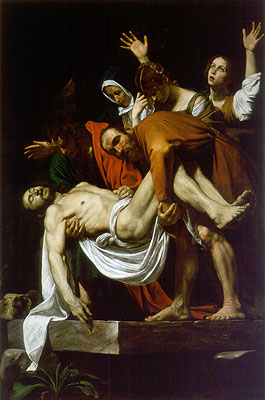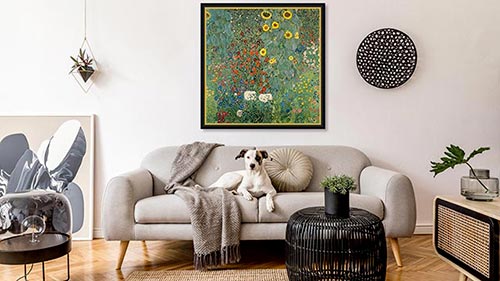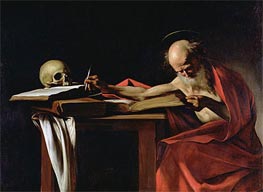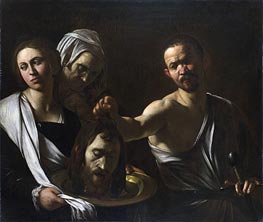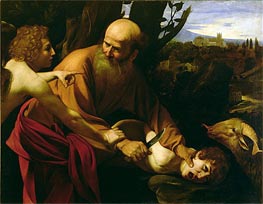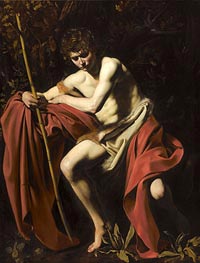The Entombment (Deposition), c.1602/04 by Michelangelo Merisi da Caravaggio
Canvas Print - 2792-CMM
Location: Pinacoteca, Vatican, Vatican CityOriginal Size: 300 x 203 cm
Giclée Canvas Print | $54.64 USD
Your Selection
Customize Your Print
By using the red up or down arrows, you have the option to proportionally increase or decrease the printed area in inches as per your preference.
*Max printing size: 51.2 x 33.9 in
*Max framing size: Long side up to 28"
"The Entombment (Deposition)" will be custom-printed for your order using the latest giclée printing technology. This technique ensures that the Canvas Print captures an exceptional level of detail, showcasing vibrant and vivid colors with remarkable clarity.
Our use of the finest quality, fine-textured canvas lends art reproductions a painting-like appearance. Combined with a satin-gloss coating, it delivers exceptional print outcomes, showcasing vivid colors, intricate details, deep blacks, and impeccable contrasts. The canvas structure is also highly compatible with canvas stretching frames, further enhancing its versatility.
To ensure proper stretching of the artwork on the stretcher-bar, we add additional blank borders around the printed area on all sides.
Our printing process utilizes cutting-edge technology and employs the Giclée printmaking method, ensuring exceptional quality. The colors undergo independent verification, guaranteeing a lifespan of over 100 years.
Please note that there are postal restrictions limiting the size of framed prints to a maximum of 28 inches along the longest side of the painting. If you desire a larger art print, we recommend utilizing the services of your local framing studio.
*It is important to mention that the framing option is unavailable for certain paintings, such as those with oval or round shapes.
If you select a frameless art print of "The Entombment (Deposition)" by Caravaggio, it will be prepared for shipment within 48 hours. However, if you prefer a framed artwork, the printing and framing process will typically require approximately 7-8 days before it is ready to be shipped.
We provide complimentary delivery for up to two unframed (rolled-up) art prints in a single order. Our standard delivery is free and typically takes 10-14 working days to arrive.
For faster shipping, we also offer express DHL shipping, which usually takes 2-4 working days. The cost of express shipping is determined by the weight and volume of the shipment, as well as the delivery destination.
Once you have added the paintings to your shopping cart, you can use the "Shipping estimates" tool to obtain information about available transport services and their respective prices.
All unframed art prints are delivered rolled up in secure postal tubes, ensuring their protection during transportation. Framed art prints, on the other hand, are shipped in cardboard packaging with additional corner protectors for added safety.
Painting Information
Caravaggio’s arrival in Rome at the end of the 16th century marked a decisive moment in the evolution of Western art - a time when theatricality was beginning to meld with raw human emotion. In this portrayal of the Deposition, there is nothing tranquil or gently reverential about the act of laying Christ on the stone slab. Instead, every muscle strain, every tilt of the head, suggests the urgent reality of death and its physical aftermath. For a viewer more accustomed to the polished gestures of late Renaissance painting, it must have felt like standing on the threshold of a new artistic terrain.
The composition is meticulously designed to draw the eye along the inert form of Christ, then up toward the outstretched arms of Mary of Cleophas. This triangular scaffolding keeps all attention locked on the figures and resists any drift into the surrounding darkness. Nicodemus and John are placed as buttresses on either side, visually supporting the weight of the Savior’s body. In a single sweep, one can trace the powerful interaction from Mary Magdalene’s bent posture to the Virgin’s half-concealed face, and finally to the stone slab anchoring the lower edge.
When it comes to color, the painting reveals Caravaggio’s fascination with the drama of light itself. The black backdrop swallows every detail that does not matter, letting the brilliance of Christ’s pallor cut through like a sudden spotlight. Browns, greens, and reds emerge in pockets, lending a rich warmth to the clothing and a resonant depth to the surrounding figures. By curbing superfluous highlights and concentrating brightness on key points, the painter heightens the solemnity of the moment.
Caravaggio’s brushwork is unflinching and direct, a style often seen as the engine behind his realist revolution. His figures maintain a breathtaking presence - no delicate embellishments, but rather a fleshy solidity that feels viscerally believable. A slight glaze here, a crisp edge there, and the figures truly inhabit space rather than float in an idealized haze. One senses the hurried labor of actual, living hands and the quicksilver nature of real body weight.
Commissioned for a Roman family chapel and later caught up in the political currents that shuffled art across Europe, this painting remains a vivid testament to a seismic shift in taste. Its intensity may still discomfort some viewers, but that is precisely where its power lies. It offers no refuge in prettiness - only a relentless confrontation with mortality, an echo of the epoch’s restless energy, and the mesmerizing skill of a painter who insisted on art’s profound immediacy.
